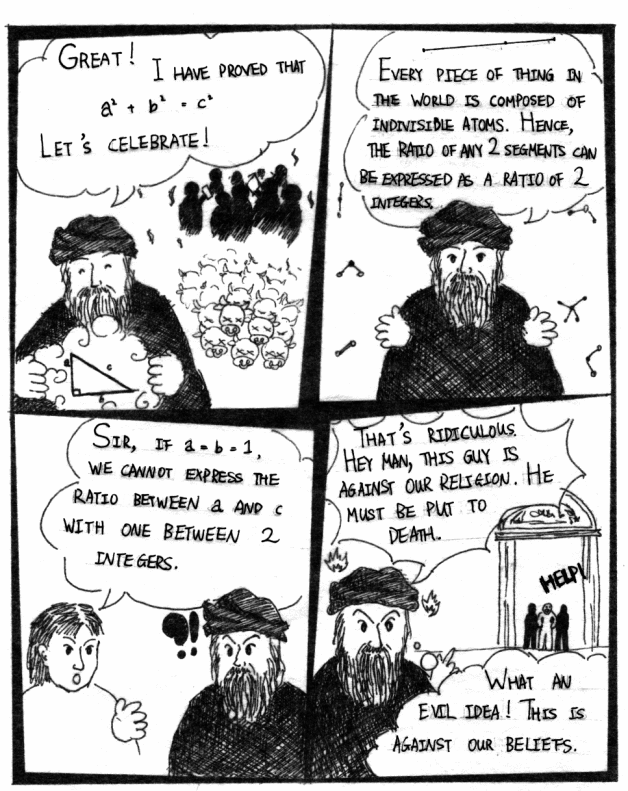
Pythagoras (around 569 to 500 BC) proved the Pythagoras’ Theorem and celebrated the event by killing one hundred cows. Thus the Pythagoras’ theorem was also called the “Hundred Cows Theorem”. On the other hand, as everyone at that time knew that every piece of matter in the world is composed of indivisible atoms, Pythagoras proposed that the ratio of any segments could be expressed as the ratio of two integers (we now call this “rational number”). And this became an axiom at that time. Later, one of his followers, Hippasus, pointed out that in a right-angled triangle of unit side lengths, the ratio of the adjacent side to the hypotenuse could not be expressed as the ratio of two integers. As this was contrary to the beliefs of the mathematicians at that time, the incident was named the first mathematics crisis in history. Although Hippasus was executed, Pythagoras had to admit the existence of “irrational numbers”. It was only until 2000 years later that the “irrational numbers” were defined using the concept of “rational numbers”.